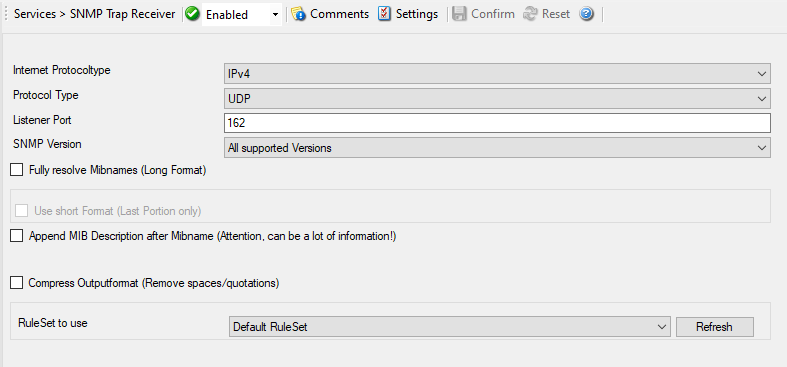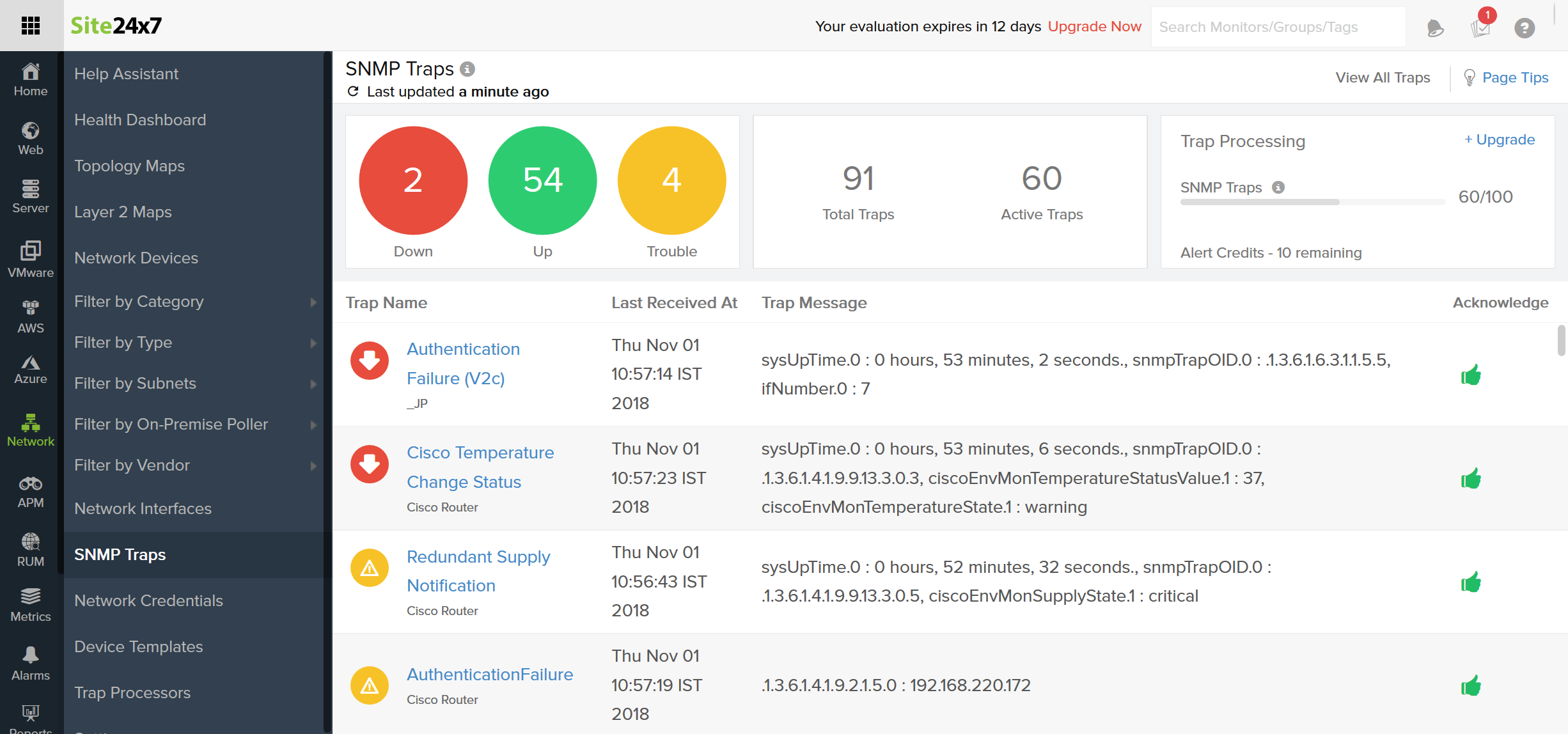


For a general introduction to the receiver's configuration, see section Monitoring Syslogs and SNMP Traps.See the Knowledge Base: How do I test an SNMP Trap Receiver sensor?.You can only set it up on a local probe or a remote probe but not on a cluster probe. You cannot use this sensor in cluster mode.For details, see the Knowledge Base: How can I show the name of a received OID in PRTG? In PRTG Network Monitor, you can copy the Management Information Base (MIB) file for your traps into the \MIB subfolder of the PRTG program directory to translate the object identifiers (OID) for the traps into readable messages.Providing a DNS name that points to the IP address of a whole group might not work for SANs. For example, if you want to receive messages from a storage area network (SAN), you might have to add a device to PRTG using the IP address of a specific array member that sends the messages. If you do not add the sensor to a probe device but to a different device in PRTG, be careful with the configuration: Ensure that the IP address or Domain Name System (DNS) name of the parent device matches the proper sender.Depending on the filters, received messages are counted in the respective channels. With the available filter options, you can individually define which types of messages the sensor considers for monitoring, and which messages it categorizes as warning or error messages.For a workaround, see the Knowledge Base: How can I configure sensors using speed limits to keep the status for more than one interval? After showing a Warning status or a Down status, and if there is no warning or error message in the following scanning interval, the sensor shows an Up status again. The sensor states of this sensor persist for one scanning interval only.See section List of Placeholders for Notifications. You can use specific placeholders in email notification templates to see the messages when you receive an email notification.This sensor supports the IPv6 protocol.This makes this sensor faster than when you use source filters. Add this sensor to a specific device to directly receive all messages from this device.Add this sensor to the probe device to receive all messages of the remote probe system.This sensor only supports the User Datagram Protocol (UDP).This sensor does not support SNMP v3 traps.We recommend that you use no more than 50 sensors of this sensor type on each probe. This sensor has a very high performance impact.


 0 kommentar(er)
0 kommentar(er)
